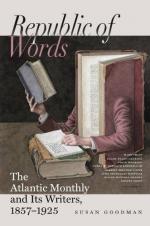The only instrument which could be used successfully in signalling through the old cable was one of peculiar construction, called the Marine Galvanometer. In this instrument, momentum and inertia are almost wholly avoided by the use of a needle weighing only one and a half grains, combined with a mirror reflecting a ray of light, which indicates deflections with great accuracy. By this means a gradually increasing or decreasing current is at each instant indicated at its due strength. Thus, when this galvanometer is placed as the receiving-instrument at the end of a long submarine cable, the movement of the spot of light, consequent on the completion of a circuit through the battery, cable, and earth, can be so observed as to furnish a curve representing very accurately the arrival of an electric current. Lines representing successive signals at various speeds can also be obtained, and, by means of a metronome, dots and dashes can be sent with nearly perfect regularity by an ordinary Morse key, and the corresponding changes in the current at the receiving end of the cable accurately observed.
A system of arbitrary characters, similar to those used upon the Morse telegraph, was employed, and the letter to be indicated was determined by the number of oscillations of the needle, as well as by the length of time during which the needle remained in one place. The operator, who watched the reflection of the deflected needle in the mirror, held a key in his hand communicating with a local instrument in the office, which he pressed down or raised, according to the deflection of the needle; and another operator deciphered the characters thus produced upon the paper. This mode of telegraphing was, of necessity, very slow, and it will not surprise the reader that the fastest rate of speed over the cable did not exceed three words per minute. Still, had the old cable continued in operation a few months longer, experience and practice would have enabled the operator to transmit and receive with very much greater facility. On our land-lines, operators of long experience acquire a dexterity which enables them not only to transmit and receive telegrams with wonderful rapidity, but to work the instruments during storms, when those of less experience would be unable to receive a dot. There is no occupation in which




